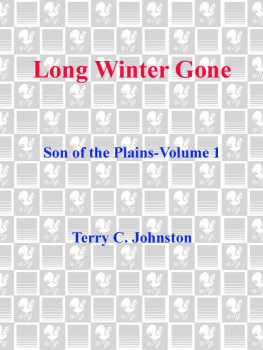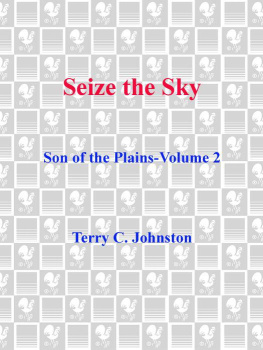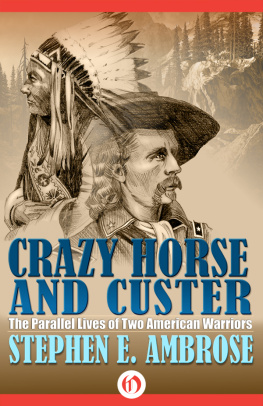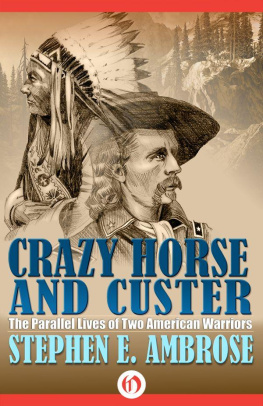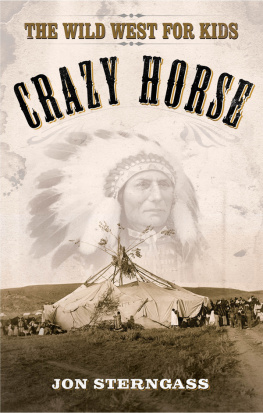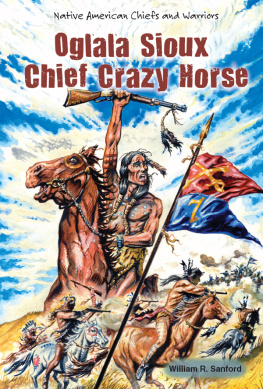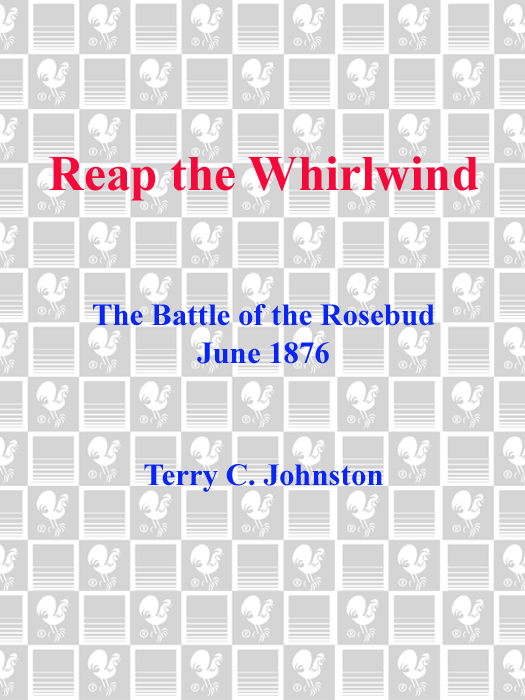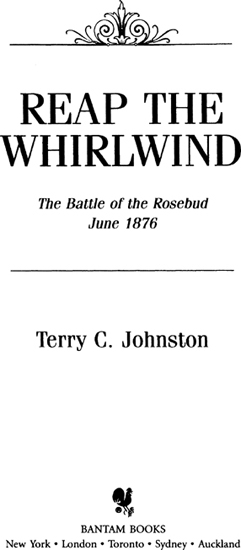TO THE DEATH
T ogether they stood, back to back, the Shoshone and the Irishman, prepared to meet the enemys rush. The yelling of blood oaths, the grunts of pain as the Sioux and Cheyenne lunged forward toward the two who stood over the bodies. Running with a fury into the fire the rest of the allies poured into their enemies across the narrowing distance along the slope.
First came three of the Lakota who made it through the dusty haze to reach the bodies before they fell to the bullets that could not miss. Then the rush of a handful as the Irishman and Shoshone levered cartridges through their overheated weapons again and again and again. And finally more than ten appeared like apparitions out of the dust, vaulting over the bodies of their fallen to rush the lonely pair.
Weapons empty now, both defenders swung their rifles savagely, like two long and slender scythes reaping those stalks of wheat rushing before the giant blades.
Swinging and singing as they cut through the dust and gunsmoke, chopping viciously through the curses and war songs and shrieks of pain and grunts of terror as bones were broken and skulls cracked and bullets struck bare flesh and sinew.
And brave men went down in blood, thinking of loved ones back home.
As brave men always will.
BOOKS BY TERRY C. JOHNSTON
Dance on the Wind
Buffalo Palace
Crack in the Sky
Ride the Moon Down
Death Rattle
Carry the Wind
BorderLords
One-Eyed Dream
Cry of the Hawk
Winter Rain
Dream Catcher
S ON OF THE P LAINS N OVELS
Long Winter Gone
Seize the Sky
Whisper of the Wolf
T HE P LAINSMEN N OVELS
Sioux Dawn
Red Clouds Revenge
The Stalkers
Black Sun
Devils Backbone
Shadow Riders
Dying Thunder
Blood Song
Reap the Whirlwind
Trumpet on the Land
A Cold Day in Hell
Wolf Mountain Moon
Ashes of Heaven
Cries from the Earth
Lay the Mountains Low
FOR NEIL MANGUM
of the National Park Service
author, historian, friend
the one who, more than anyone else,
helped me put this story together
and made three battles
make sense as one
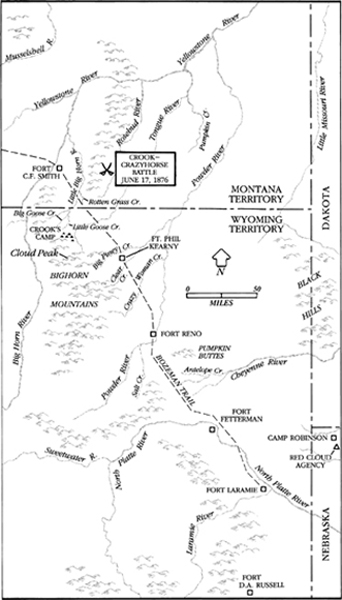
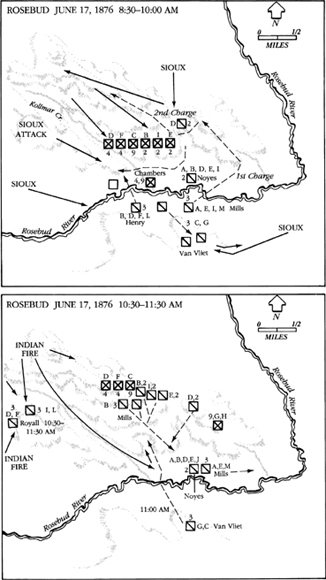
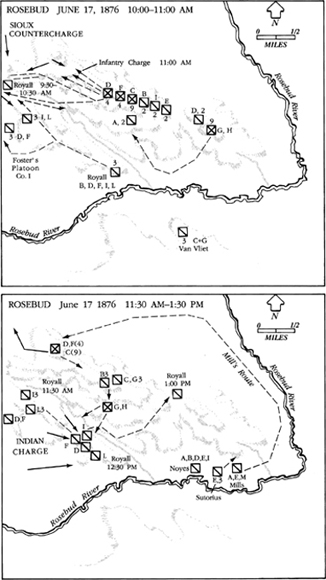
In the barracks, the men knew too. Some took [Crooks pending summer campaign to the Rosebud] with the veterans professional calm; such firebrands as the fighting Irish were jubilant. Full-dress uniforms and the new spiked helmets, along with sabers, were packed and stored; field uniforms donned. Blankets were rolled and tents and stoves, sure to be dropped in the first forced march, were stowed in wagons. In contrast with the general exhilaration was the patent disgust of officers ordered to remain in garrison. They could only wait for news from the front and scan the casualty lists. They would, they knew, pause in grief over the name of a brother officer killed in action but shortly be irresistibly drawn to thumb through the pages of the Army Register murmuring: Poor fellow, Im sorry hes gone. Now how many files does that give me?
There would be a spate of promotions in this bloody year of 1876.
Fairfax Downey
Indian-Fighting Army
The Battle of the Rosebud represents an atypical encounter on the Western frontier because large masses of troops rarely clashed with extensive Indian forces.
Neil Mangum
Battle of the Rosebud: Prelude to the Little Bighorn
I believe if it had not been for the Crows, the Sioux would have killed off half of our command before the soldiers were in a position to meet the attack.
Frank Grouard
Frank Grouard, Army Scout
The Battle of the Rosebud represents a strategic victory for the Sioux and Cheyenne against the U.S. military troops staged at the zenith of the Sioux War of 1876-1877. The Indian victory at the Rosebud was a prelude to and directly led to a still greater triumph eight days later on June 25, 1876, when Lt. Col. George A. Custer and his immediate command were wiped out to a man by these same warriors who had opposed Crook on the Rosebud.
J. W. Vaughn
With Crook at the Rosebud
Old soldiers who had served in the Civil War commented later that this was as desperate a struggle as any they had experienced in the great war.
Fred H. Werner
Before the Little Big Horn
The [Battle of the] Rosebud was lost not because of poor tactics or negligence on the part of any of the participants, but because of the overwhelming superiority of manpower and firepower on the side of the Indians. They outnumbered the soldiers three to one and were armed with the latest model repeating rifles. For one of the few times in the history of Indian warfare the whites were confronted with a really superior force, which, though composed of savages, used a system of tactics, dividing the troops and attempting to destroy them in sections. This same condition obtained once more, eight days later [on the Little Bighorn].
Martin F. Schmitt, editor
General George Crook, His Autobiography
One point that has been made by practically all the historiansthe Indians were very short of guns and ammunition. War clubs, bows and arrows, and lances were used by most of the warriors in this battle. Most of the cartridge cases and slugs that I found [on the Rosebud Battlefield site] were those used by the soldiers.
Fred H. Werner
Before the Little Big Horn
In [Crooks] retreat [to Goose Creek after the Battle of the Rosebud], rather than the casualties, lay the full measure of the defeat, for it neutralized him at the most critical juncture of the [Great Sioux Campaign of 1876].
Robert M. Utley
Frontier Regulars
It seems reasonable to say that the Battle of the Little Bighorn would not have been fought or would have ended quite differently had Crooks campaign been successful or had he taken what appears at this late date to have been reasonable action, by sending information about the fight to the military forces under [General Alfred] Terry.
J. A. Leermakers
The Battle of the Rosebud
Great Western Indian Fights
By stopping General Crook, the Indians also gained renewed confidence in their ability to cope with the white soldiers. Just one week later, these same Indians met Custer on the Little Big Horn River and recorded a victory that shook our nation to its very foundation.
Fred H. Werner
Before the Little Big Horn
If General Crook is to serve further against the Indians it should be in a subordinate capacity.
Editorial
The New York Herald
Thursday, July 6, 1876
The Indians reached the zenith of their power at the Rosebud and the Little Big Horn. After expending their supply of ammunition in these battles, they were strictly on the defensive and did not dare to meet the soldiers in open combat.



